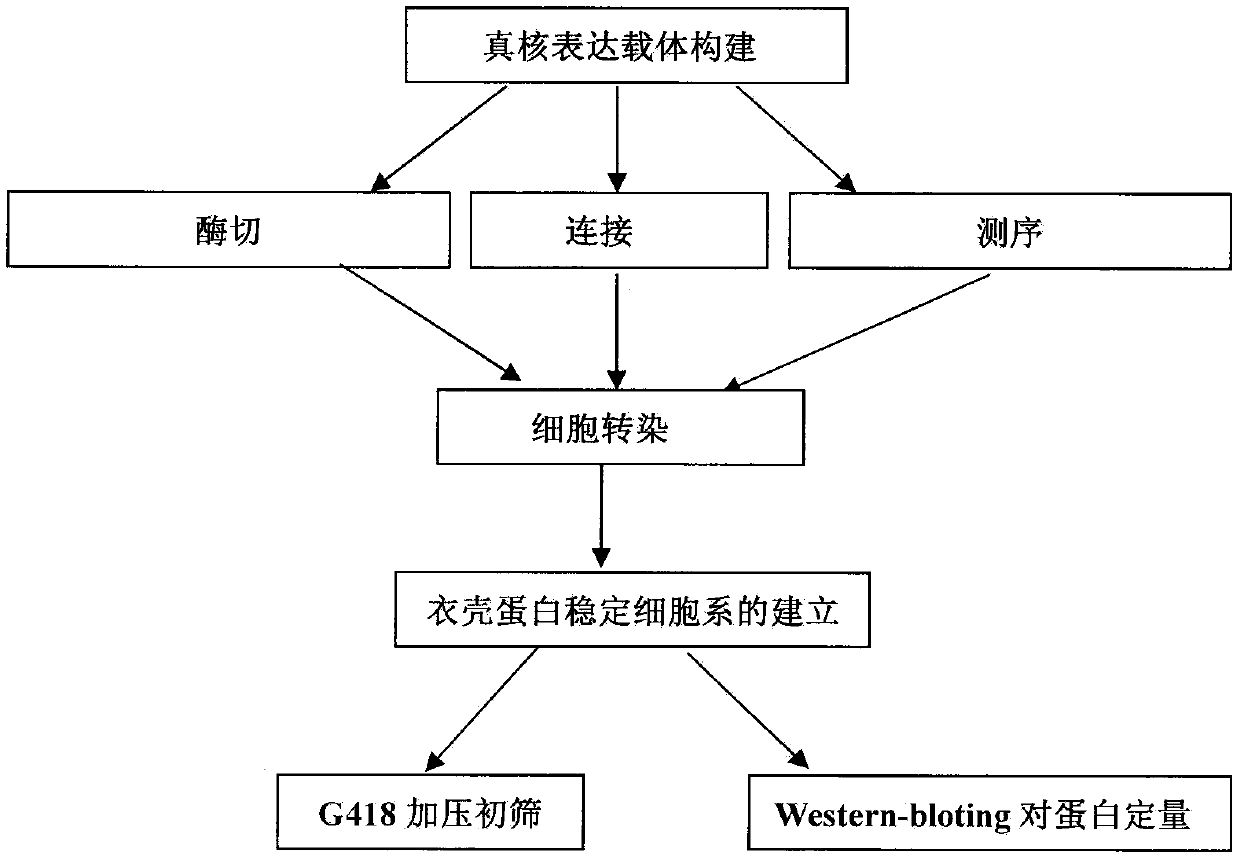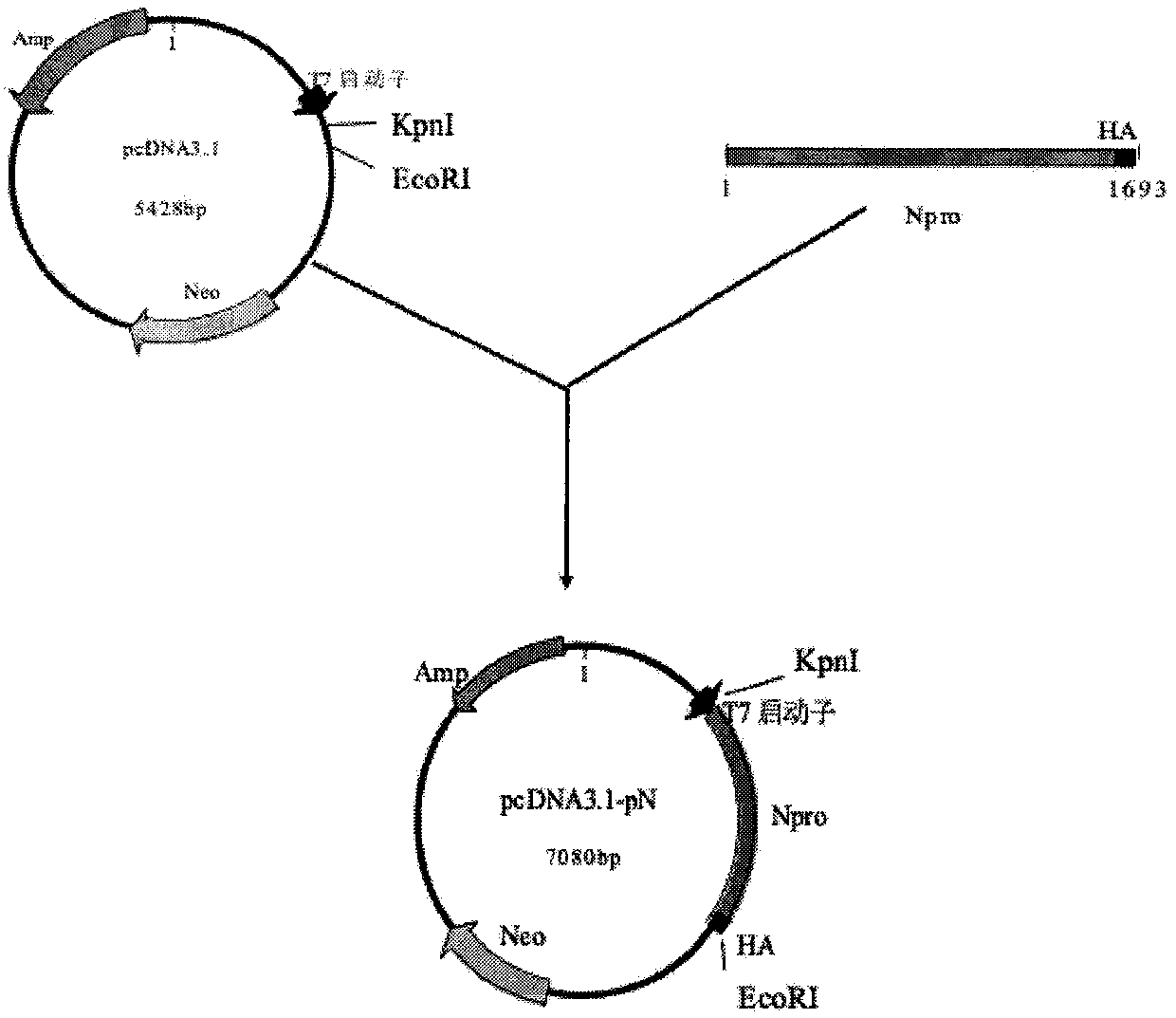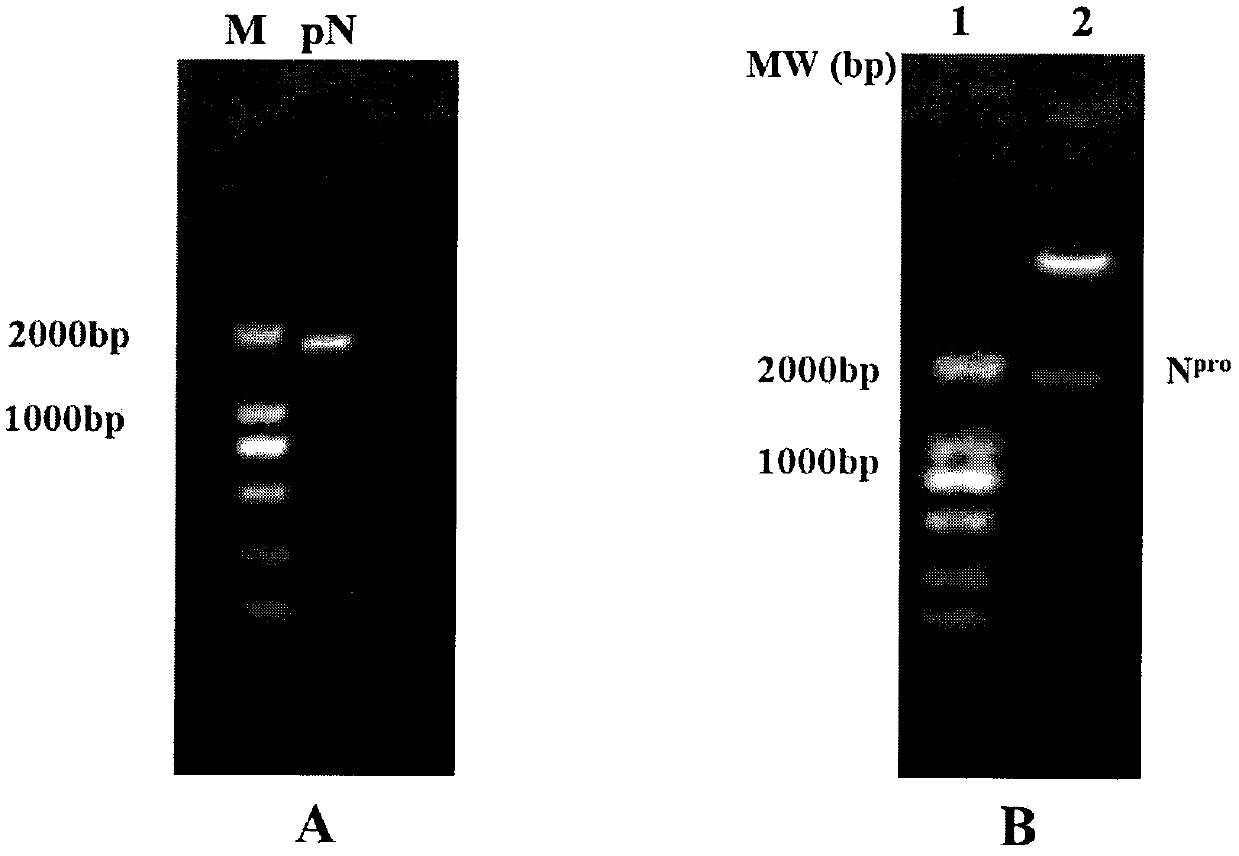Construction of stable expression cell line of capsid protein of peste des petits ruminant virus
A technology of Peste des petits ruminants and capsid protein, applied in the direction of antisense single-stranded RNA virus, virus, viral peptide, etc., can solve the problems of virus sensitivity, limit the large-scale field use of vaccines, and distinguish naturally infected animals, etc.
- Summary
- Abstract
- Description
- Claims
- Application Information
AI Technical Summary
Problems solved by technology
Method used
Image
Examples
Embodiment 1
[0030] The construction of embodiment 1 eukaryotic expression vector
[0031] connecting the N protein gene fragment (shown in SEQ ID NO: 1) to the expression vector to construct a recombinant expression vector;
[0032] The capsid protein gene fragment is obtained by optimizing the capsid protein gene, inserting KpnI at the N-terminus, inserting HA at the C-terminus in turn, and obtaining the EcoR I restriction site. Perform PCR to obtain a sufficient amount of the target fragment; extract the plasmid to obtain the vector pcDNA3.1; double enzyme digestion reaction to expose the corresponding cohesive ends of the vector and the target fragment; connect the target fragment to the vector through the ligation reaction of T4 DNA ligase; transform Formation of clones; extraction of recombinant plasmids by plasmid mini-extraction; double-enzyme digestion verification; sequencing. The specific experimental methods and steps are as follows:
[0033] (1) Preparation of Escherichia co...
Embodiment 2
[0054] Example 2 Cell Transfection
[0055] After testing that the liposome method was not feasible, the experiment switched to the electroporation method for cell transfection. The main steps are as follows: plant 2×10 cells in T175 cell culture flasks before electroporation. 6 MDBK cells, add 20mL complete medium (DMEM+10%FBS), place in 5% CO 2 Incubate for 24 h at 37°C in an incubator. Take out the cultured cells and put them on the ultra-clean workbench, discard the old medium, wash 2 times with 5mL PBS, add 4mL 37°C preheated trypsin and let it stand for digestion for 2min, and then beat the adherent cells out of the culture by external force The bottle is in a suspended state, and finally blown and broken up by a pipette gun to make it a single distribution. The cell suspension was transferred to a 50mL centrifuge tube, placed on ice for 1min and then centrifuged at 1200rpm for 1min. Remove the supernatant after taking out the centrifuge tube, add 10 mL of pre-cooled ...
Embodiment 3
[0056] The establishment of embodiment 3 stable cell lines
[0057] Determine the optimal screening concentration of G418: select the concentration of 250 μg / mL, 500 μg / mL, and 800 μg / mL for experiments, and use cells without G418 as a control to screen for the lowest concentration that can kill all MDBK cells within 10 to 14 days , finally choose 600μg / mL as the experimental screening concentration.
[0058] Cells are replaced with screening medium 4 hours after transfection. During the screening process, the cells should be treated separately according to the growth status, density and color of the medium. Generally, the medium is replaced every 3 days, and you can see it in about 5 days. When the cells begin to die, a large number of cells begin to die in about 7 days, but adherent cells in good growth state can still be seen at the bottom of the culture flask.
[0059] After 15 days, the cells at the bottom of the cell culture dish can be seen distributed in clusters, tha...
PUM
 Login to View More
Login to View More Abstract
Description
Claims
Application Information
 Login to View More
Login to View More - R&D
- Intellectual Property
- Life Sciences
- Materials
- Tech Scout
- Unparalleled Data Quality
- Higher Quality Content
- 60% Fewer Hallucinations
Browse by: Latest US Patents, China's latest patents, Technical Efficacy Thesaurus, Application Domain, Technology Topic, Popular Technical Reports.
© 2025 PatSnap. All rights reserved.Legal|Privacy policy|Modern Slavery Act Transparency Statement|Sitemap|About US| Contact US: help@patsnap.com



